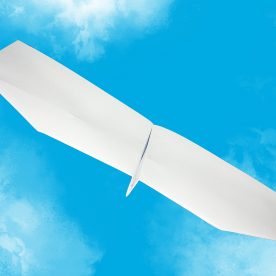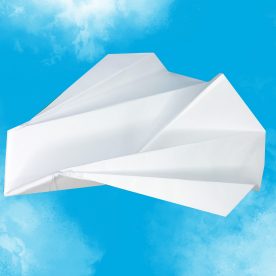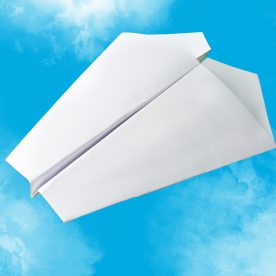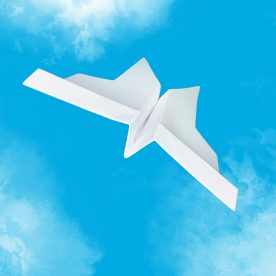Paper Airplanes and Aerodynamics – How They Work
Whenever you play with paper airplanes, you should be aware of the mechanics involved in aerodynamics. This includes the importance of drag, lift, and thrust.
Drag
Changing the drag on paper airplanes can make a significant difference in their flight characteristics. A paper plane with high drag will be much harder to push through the air. A paper plane with low drag will fly a lot farther.
There are four forces involved in flight: gravity, thrust, lift, and drag. They affect paper airplanes differently depending on their shape. They also change with different materials.
For example, the paper with a flat side will have more drag than a paper with a curved edge. Similarly, the weight of the paper will have a big impact on its flight performance.
The lift and drag ratios will change with the angle of attack of the glider. The higher the angle of attack, the more the drag will be in proportion to the lift.
Lift
Various types of paper airplanes are used in science experiments. These can be thrown at different speeds to determine what forces are at work in a paper aircraft. They are also useful for testing the aerodynamics of different aircraft designs.
A paper autogyro is a type of paper model that has twin contra-rotating blades that spin on the axles of the plane to provide lift. The paper autogyro was developed to teach flight mechanics to students. The model was first published in 1985 in a Science Magazine book. It was built by James Zongker.
There are many paper models that have been created, and many of them have high flight performance. Researchers have studied the flight characteristics of paper models and have found several differences from conventional aircraft. These differences include the shape of the paper and the way it is folded.
Thrust
Using paper airplanes and aerodynamics as a lesson in science helps students learn about the forces at work. These forces, which are created by natural and artificial phenomena, are responsible for the flight of aircraft.
The flight of a paper plane relies on the four basic forces involved in the process. These are thrust, lift, drag, and gravity. When they work in tandem, an aircraft is able to travel a long way. These forces can be used in science experiments to test different designs and identify flaws.
The simplest of these paper airplanes is a “wing” which cuts through the air. The wing, along with the tail of the plane, acts as a drag force. When the wing is in its “sweet spot”, the force pushes back against it. This helps the plane maintain its altitude.
Control surfaces
During the flight of a paper airplane, the design of the paper plane affects the forces acting on the plane. The plane uses forces such as lift, thrust, and drag. In addition, a paper airplane’s weight also affects its flight. The center of mass is the point in the middle of the plane where it balances. If the plane’s center of mass is too far forward, it will nose dive.
The control surfaces of paper airplanes include the rudder, elevators, and ailerons. The rudder controls yaw. The rudder is a vertical control surface on the back of the plane. The ailerons are hinged trailing edge sections on the wings. The ailerons are used in combination with the rudder to make tighter turns.
The rudder has a positive deflection. This means that the rudder will move left. The lateral force produced by the rudder is transferred to the vertical stabilizer.
Making your paper airplane fly further
Whether you want to build a paper airplane for fun or for competitions, you will need to consider the weight, size, drag and thrust of your craft. The design of your aircraft will also affect its performance.
Aside from the normal forces of gravity, lift, drag and thrust, there are some other lesser-known forces that will help you make your paper plane fly further. These forces include the ailerons, wing folds, and elevators. These can all be adjusted to enhance the flight of your airplane.
The aileron can be large or small depending on the type of paper airplane you want to build. Ailerons can be effective for nosediving paper airplanes. This is because they reduce the weight in the nose, which helps to balance the plane. However, they can also be a hindrance for airplanes that are too heavy.










